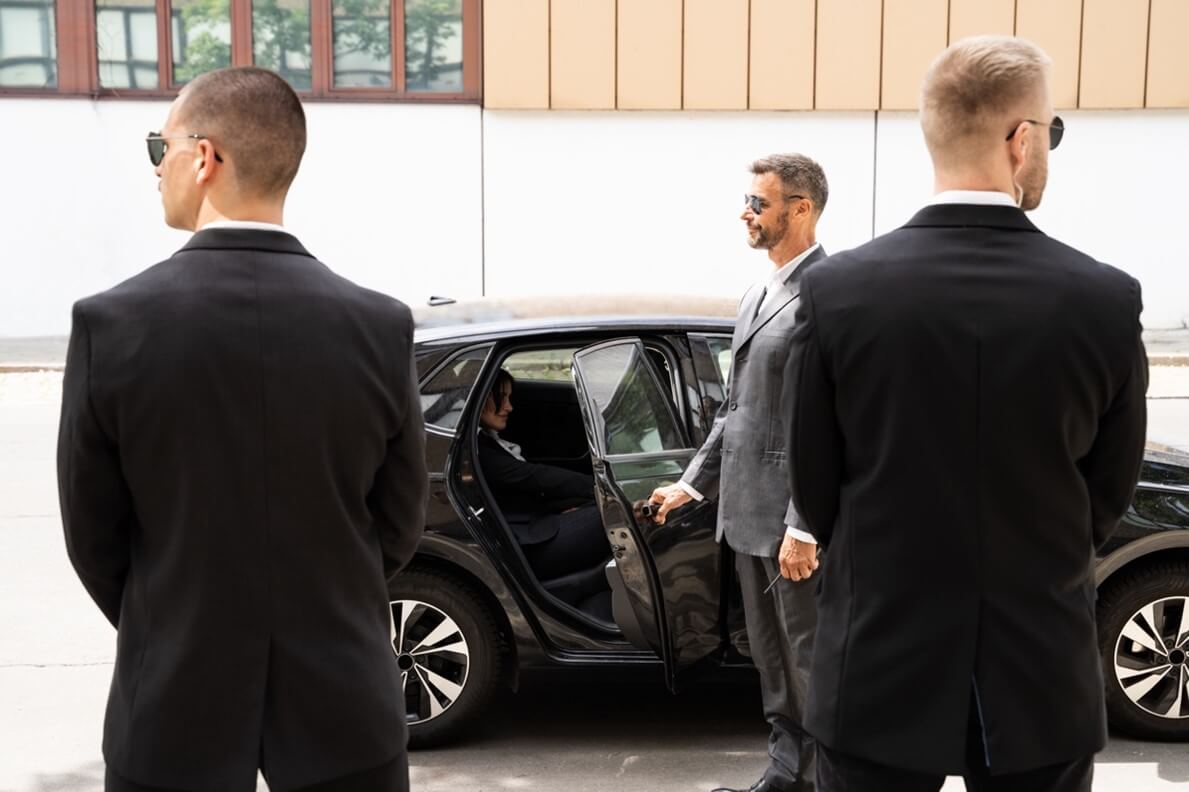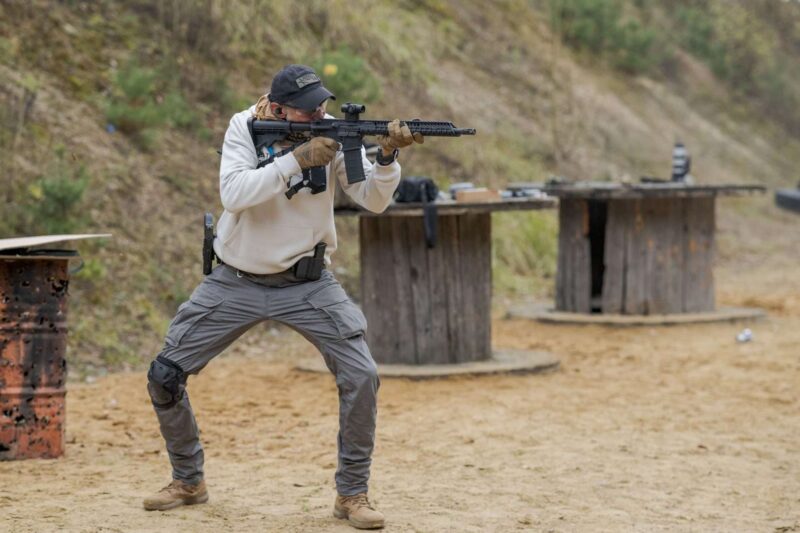In an ever-evolving security landscape, the demand for skilled professionals is on the rise, particularly in the realm of executive protection. For those working as security guards, the transition into this specialized field can seem daunting but is far from impossible.
Drawing upon their foundational experience in maintaining safety and mitigating risks, security guards possess a unique skill set that can be finely tuned for high-stakes environments. However, the journey from patrolling a shopping center to safeguarding high-profile clients requires more than just a shift in duties; it calls for an understanding of nuanced interpersonal interactions, advanced threat assessment, and strategic planning.
This article will explore the essential steps, training, and mindset needed for security guards to successfully pivot into executive protection roles, illuminating the pathways that can transform vigilant watchfulness into unparalleled protective expertise.
Key Differences Between Security Guard and Executive Protection Roles

When comparing the roles of security guards and executive protection agents, several key differences emerge that highlight the distinct nature of these positions. Security guards typically provide a general security presence, monitoring premises, enforcing rules, and responding to incidents as they arise.
Their focus is often reactive, addressing safety concerns in real-time without necessarily engaging in preventative planning. In contrast, executive protection professionals operate on a more strategic level, tasked with anticipating potential threats to individuals, particularly high-profile clients, and devising comprehensive plans to mitigate risks before they materialize.
This role demands an advanced skill set, including threat assessment, evasive driving techniques, and close-quarters combat preparedness. Additionally, while security guards may operate in a variety of environments—from retail settings to office buildings—executive protection agents often travel extensively, adapting their strategies to diverse locations and cultural contexts.
Understanding these differences is paramount for security professionals aiming to transition into the specialized field of executive protection.
Additional Training and Certifications

To enhance their prospects in the field of executive protection, security guards should consider pursuing additional training and certifications that go beyond their foundational skills. Programs focused on risk assessment, threat analysis, and advanced first aid can significantly elevate a candidates profile.
Specialized courses in firearms proficiency, defensive driving, and personal security tactics are invaluable, offering practical experience that can set them apart in a competitive job market. Furthermore, obtaining certifications from recognized organizations, such as the International Foundation for Protection Officers (IFPO) or the National Association of Legal Investigators (NALI), demonstrates a commitment to professionalism and ongoing education.
This not only expands a guards skill set but also builds credibility, helping them gain the trust of potential clients and employers in the high-stakes realm of executive protection. Ultimately, those who invest in their professional development are better equipped to navigate the complexities of this critical role, providing a level of service that meets the demanding expectations of today’s security landscape.
Enhancing Communication and Interpersonal Skills

Enhancing communication and interpersonal skills is vital for security guards aspiring to transition into executive protection roles. It’s not merely about relaying instructions; it’s about crafting a narrative that fosters trust and rapport with clients.
Listening becomes just as important as speaking—understanding a client’s unique needs can significantly alter the approach taken in high-stakes environments. Engaging in active dialogue, honing negotiation tactics, and managing conflicts gracefully are skills that can elevate an individual from a standard security role to a trusted protector.
Networking opportunities, both formal and informal, can also sharpen these abilities, exposing security professionals to various communication styles and interpersonal dynamics. Ultimately, a well-rounded executive protection specialist must blend assertiveness with empathy, ensuring their presence is felt as both a shield and a confidant.
Conclusion
In conclusion, the transition from security guard to executive protection professional is a viable and rewarding career path for those seeking to elevate their roles in the security industry. By leveraging their existing skills, gaining specialized training, and acquiring a deeper understanding of risk management and client relations, security guards can successfully navigate this shift.
Institutions like Pacific West Academy offer invaluable resources and training programs that equip individuals with the necessary knowledge and expertise to thrive in high-stakes environments. With dedication and the right educational support, aspiring executive protection specialists can confidently step into these demanding roles, ensuring the safety and security of their clients while advancing their professional careers.


